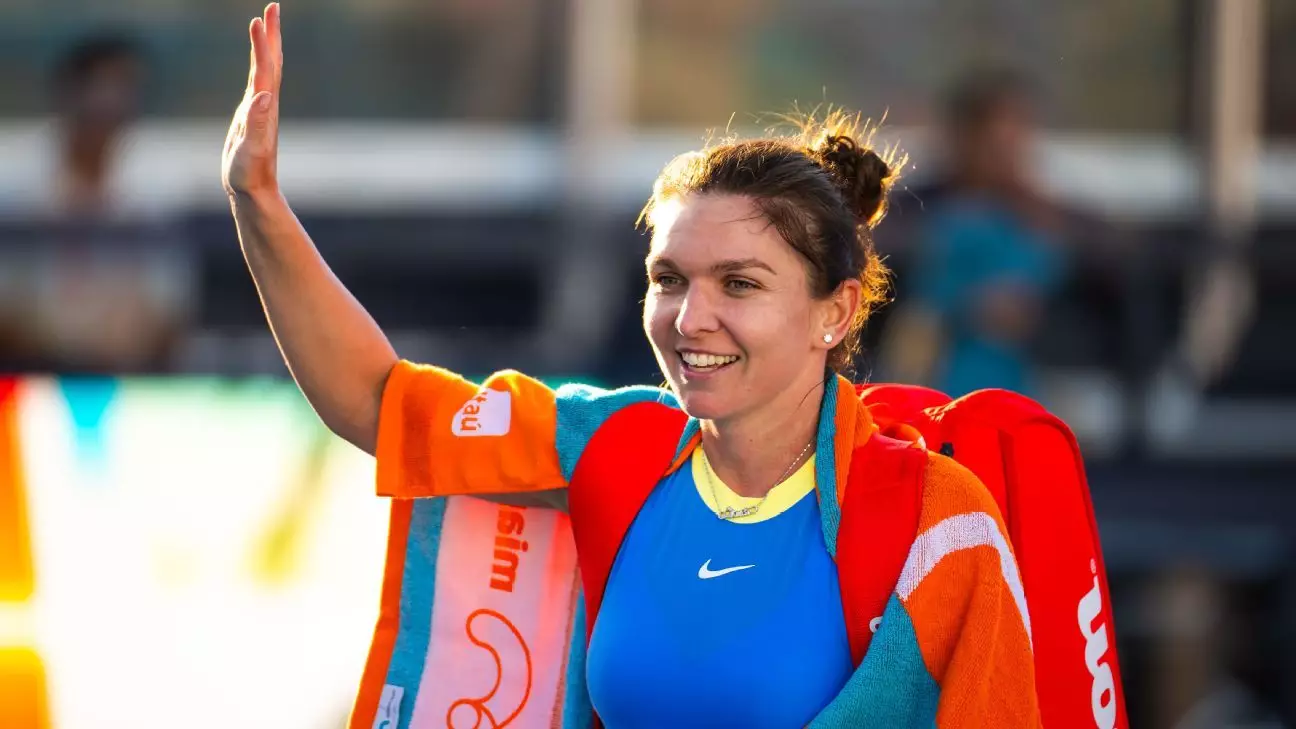The realm of professional sports has long grappled with the pervasive issue of doping and its repercussions. In recent developments in the world of tennis, two high-profile players, Iga Swiatek and Simona Halep, found themselves at the center of a contentious debate regarding how doping violations are handled by the authorities. This article seeks to dissect the contrasting treatment each athlete received, the implications for their respective careers, and the broader context of fairness in sports.
On the surface, the circumstances surrounding Halep and Swiatek appear to be strikingly different, leading to divergent outcomes in their cases. Swiatek, who was ranked world No. 1 when she tested positive for trimetazidine (TMZ), received a relatively lenient one-month ban following an investigation that determined her positive test stemmed from contaminated medication. This swift resolution contrasts sharply with Halep’s prolonged ordeal, which began with her provisional suspension in October 2022 and culminated in a four-year ban—later reduced to nine months—after extensive appeals.
Halep’s situation highlights a profound discrepancy in how doping violations are processed. She has openly expressed her frustration at the perceived injustice, questioning why Swiatek’s case was resolved with such expediency while hers dragged on for over 18 months. Halep’s assertion that her positive test resulted from a contaminated supplement provokes further reflection on the transparency and consistency of the anti-doping system.
In the wake of the controversy, Karen Moorhouse, chief executive of the International Tennis Integrity Agency (ITIA), defended the process by emphasizing the differences between “intentional doping” and “inadvertent breaches of the rules.” While this distinction may be legally sound, it raises profound ethical questions about the integrity of the governing bodies. Are allowances for “inadvertent breaches” applied uniformly? Or does the perceived status or marketability of a player unduly influence the judicial rigor of anti-doping investigations?
Moreover, the contrasting outcomes for Jannik Sinner, another prominent athlete who faced scrutiny for failing drug tests, elucidates further complexities in the doping landscape. Sinner was cleared of wrongdoing due to his explanation that the anabolic agent clostebol entered his system through indirect means. This ruling has incited additional criticism regarding double standards in enforcement, particularly when juxtaposed with Halep’s stringent penalties despite her claims of unknowingly consuming a banned substance.
Player Advocacy and Calls for Change
The discontent expressed by Halep and other players reflects a growing sentiment within the player community regarding the need for reform in the anti-doping system. The Professional Tennis Players Association (PTPA) has echoed this call, advocating for a system rooted in transparency, consistency, and objectivity. Their statement underscored the importance of fair treatment for all players, asserting that due process is essential, regardless of their ranking or resources.
This advocacy coincides with a broader conversation about the role of athletes in shaping governance in sports. Players are beginning to unite under the banner of advocacy, demanding accountability from the organizations that regulate them. This movement towards improved governance could lead to systemic changes that ensure all athletes are afforded the same rights and opportunities to defend themselves against doping allegations.
As tennis grapples with these complex issues, the cases of Iga Swiatek and Simona Halep serve as stark reminders of the challenges faced by athletes in navigating the anti-doping landscape. The perceived disparities in treatment highlight the need for a comprehensive review of regulations and processes within the sport. As the dialogue continues, it is crucial for governing bodies to establish a fair and equal system that not only ensures the integrity of the sport but also instills trust among its participants. Ultimately, the pursuit of fairness in sports is not just about individual cases; it is about the integrity of the entire athletic community and the trust that fans, players, and stakeholders must have in the systems designed to uphold the values of sport.


Leave a Reply